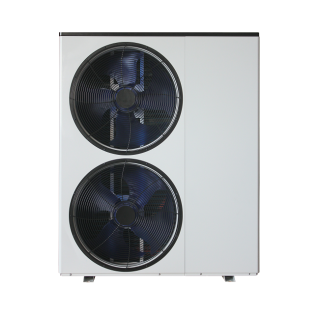compact structure, stably operation, easy to install and easy to use air to water heat pump
How to choose a suitable air to water heat pump?
We need to consider application scenarios, energy efficiency, types, and core configurations. Most people choose single-function or multi-function models based on usage purposes . Commonly used single heating systems of air to water heat pump: only for heating; two-stage combined supply systems : heating + cooling (mainstream choice) ; three-stage combined supply systems : heating + cooling + domestic hot water (optimal energy efficiency) ,many people use as domestic hot water heater.
Different air source heat pumps have distinct advantages: Air-source heat pump : easy installation, no geographical restrictions; reduced efficiency in low-temperature environments . Ground-source heat pump: high energy efficiency, stable operation; requires geological exploration and higher costs . Water-source heat pump: high heat exchange efficiency; dependent on water resources, subject to multiple policy restrictions . We recommend household use : air-source heat pumps (high cost-effectiveness) ; . Industrial applications generally use ground-source heat pumps (requires COP ≥40) .
When selecting air source heat pumps, core performance parameters must be considered: Energy efficiency rating . Priority should be given to : Grade 1 energy efficiency (high COP value) with over 30% long-term power savings ; High-temperature industrial applications (>100°℃) require dedicated high-temperature models . . In recent years, variable-frequency technology has been widely applied in heat pumps. Our company's fully DC variable-frequency 6kW heat pump offers strong energy-saving capabilities and flexible output adjustment for long-term operation ; fixed-frequency models are cost-effective. Power selection differs from other house heating heat pump: 5-10kW for 100㎡ residential units, 10-15kW for 200㎡ villas, and 500-700kW for 10,000-square-meter commercial complexes.
Industrial heat pumps require temperature classification: Medium-temperature (60-100℃) is typically used in food and textile industries, while high-temperature (100-160℃) is mainly applied in pharmaceutical and chemical processes.













